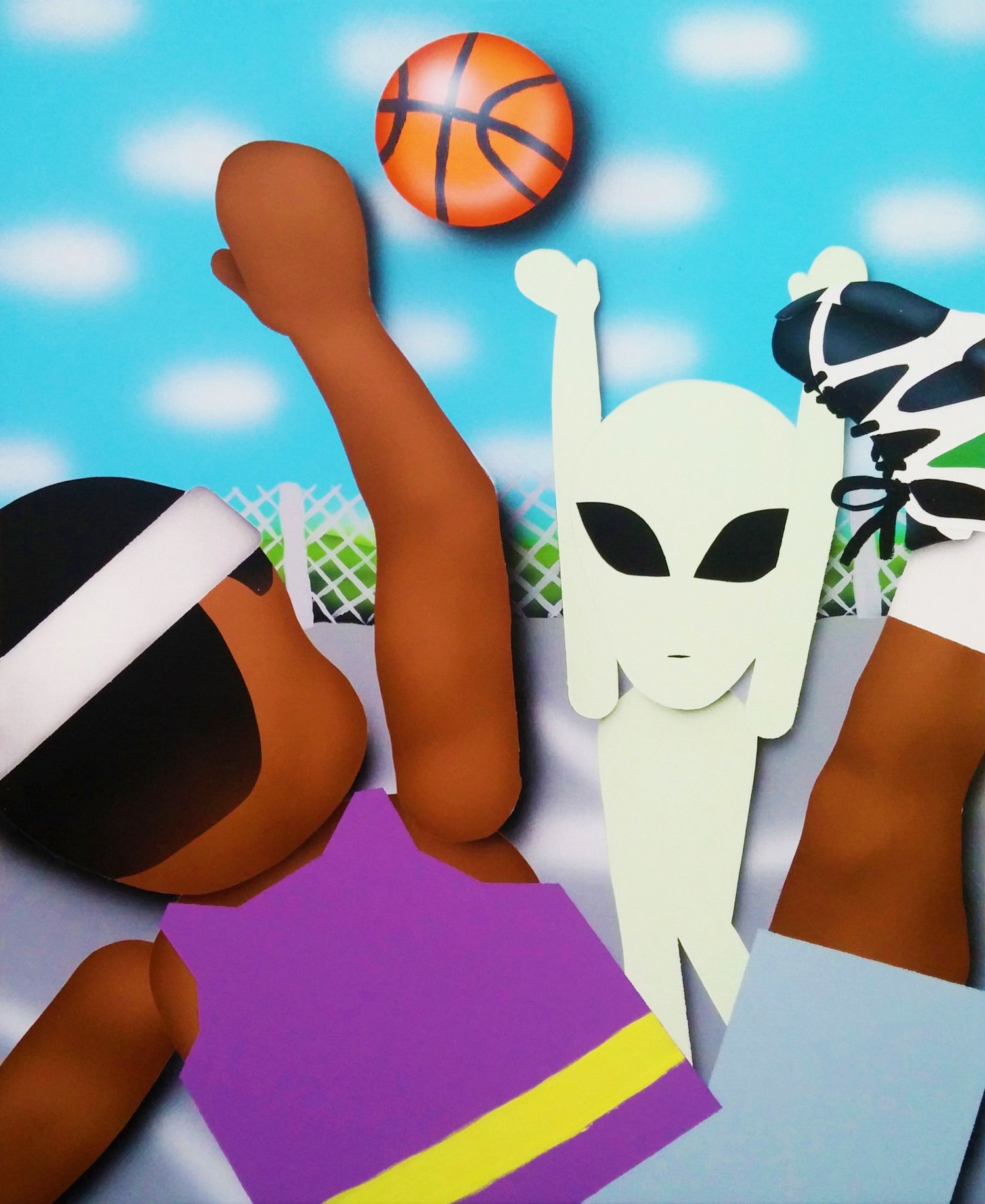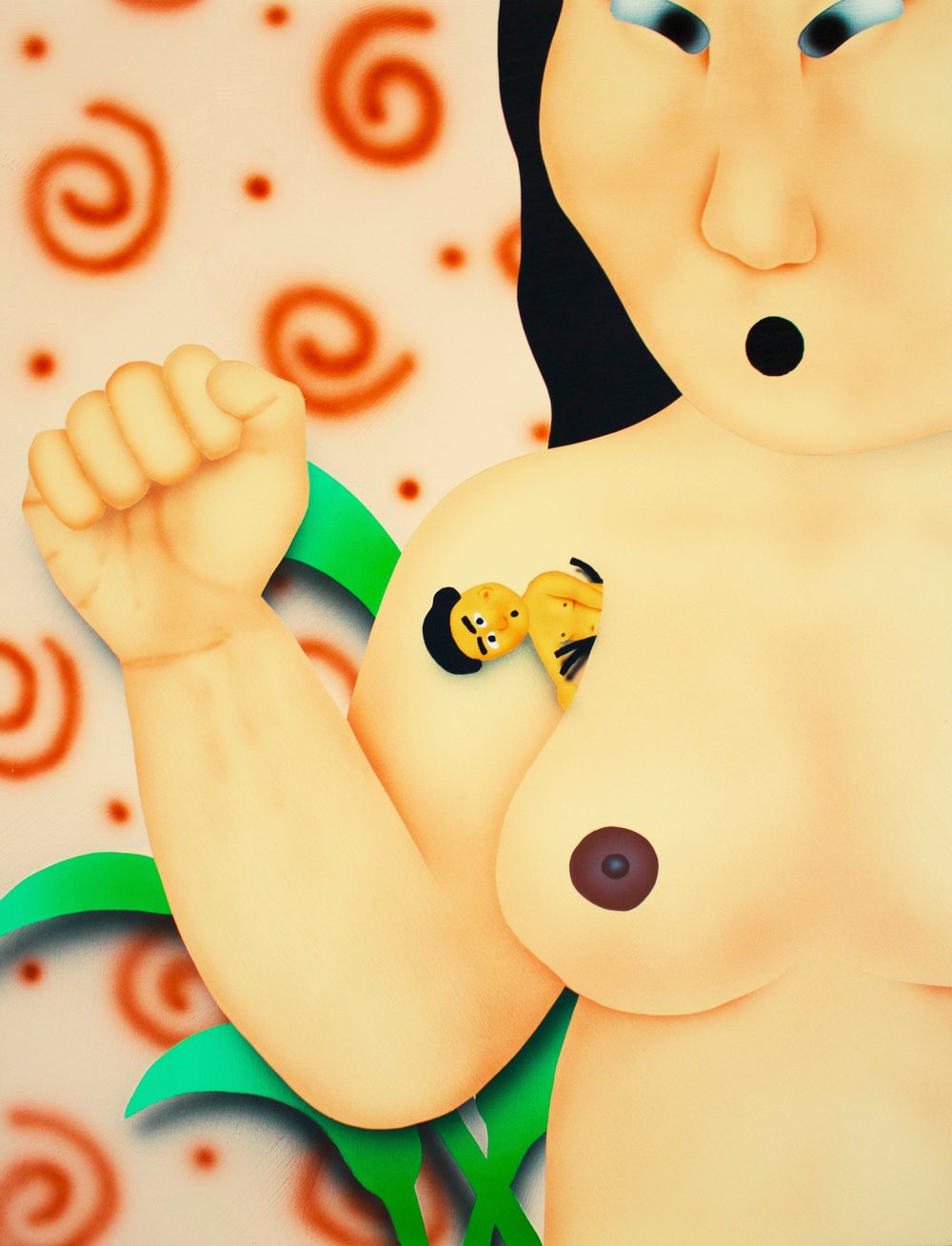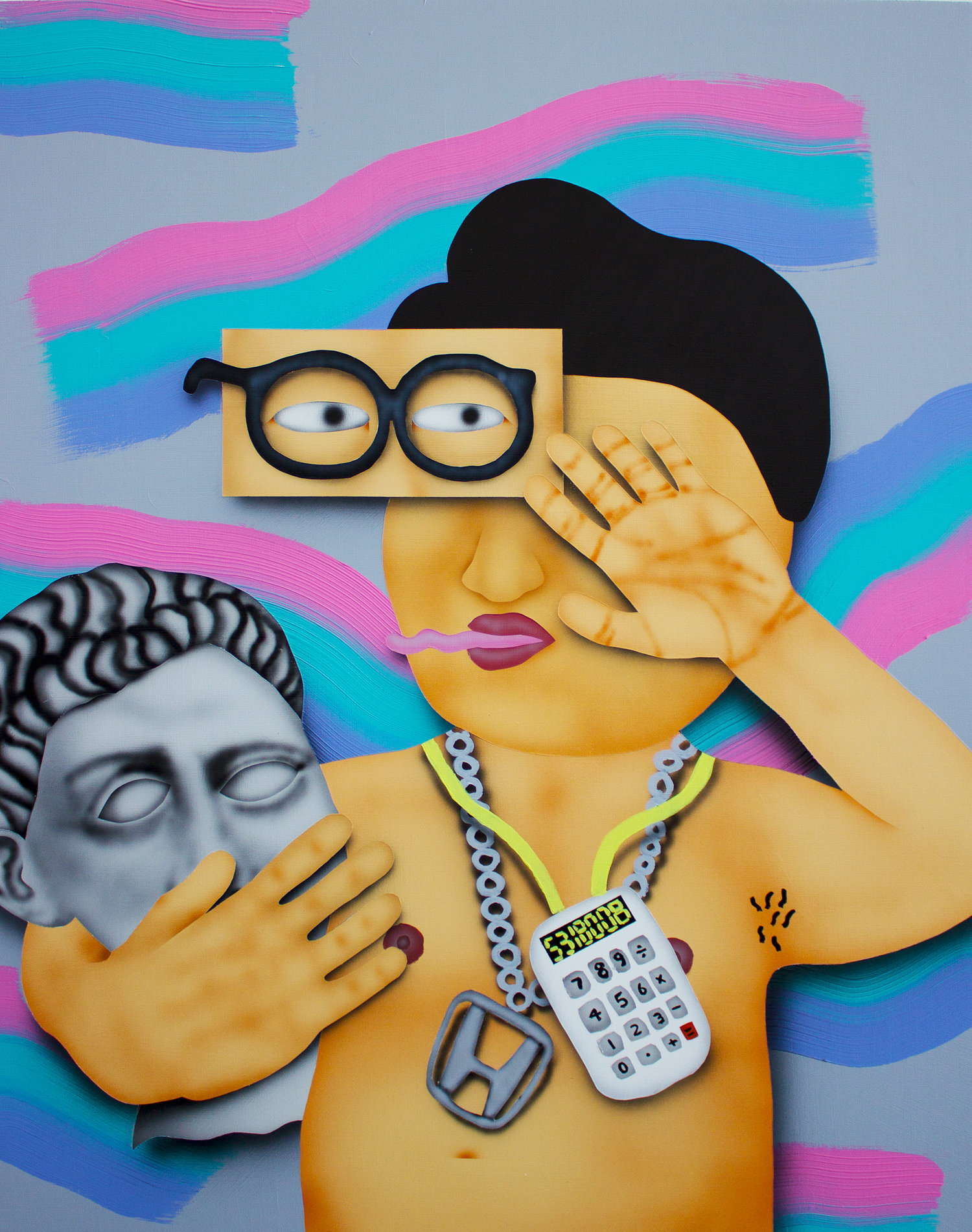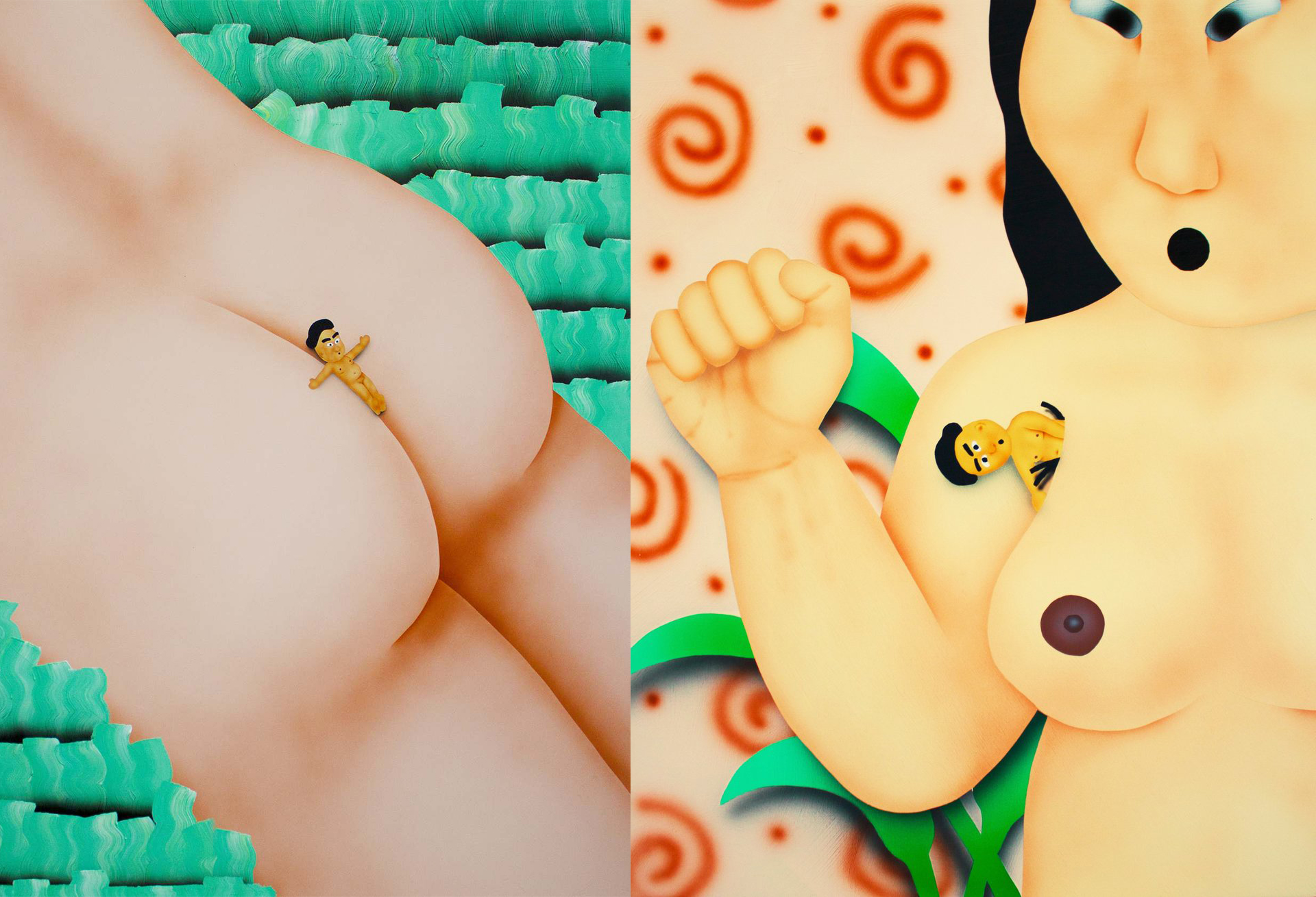In contrast to his technique — smooth layers of colorful acrylic — the content of Los Angeles-based artist Sean-McGee Phetsarath’s work is crude. In one painting, titled “Short People Problems,” a “little Asian baby kid” slides down a gigantic butt with his arms outstretched. But Sean’s work is more complex than it appears. It is both thoughtful and self-aware, his absurd interpretation of his childhood and otherness. “The narratives that I create are influenced by the feeling of being a foreigner in a foreign land,” explains Sean, who grew up in Texas with strict parents who emigrated from Laos. “I’m just trying to find the humor in the position that I’ve found myself in.” And find humor in it he does: In the painting “For Real Though Mom, Can I Just Have Lunchables Next Time,” a woman in a traditional Lao sinh regurgitates food into Sean’s mouth as he struggles and flings his flip-flops into the air. “My mom would chew my food and feed it to me like a fucking penguin,” the 28-year-old admits. “I think the weirdest things that happened to me were things that I grew up thinking were normal, when in retrospect, are things that may have scarred me.” In the following interview with i-D, Sean talks more about his art and identity, digital culture and social media, and what his mom thinks of him now.
Your work is an interpretation of your childhood, and what it was like to grow up with strict Asian immigrant parents in Texas. Can you tell us about that?
I grew up in a small town just outside of the Dallas area. My parents emigrated from Laos in the 80s, and we ended up in an isolated area of a city of about 13,000 people with mostly other Lao families. The most difficult part was finding a cultural identity among everything that I was exposed to. There weren’t enough other Lao people of my age group so I ended up spending a lot of time hanging out with the Mexican kids in school because they were kind of the same color as me. But I identified a lot with hip-hop culture of the 90s. All of this while still dealing with the model minority stereotype and trying not to seem so smart all the time. The majority of my childhood, and still adult life, was trying to figure out who I was and where I belonged. I think I found some sense of confidence from cartoons because of how race was so ambiguously addressed.
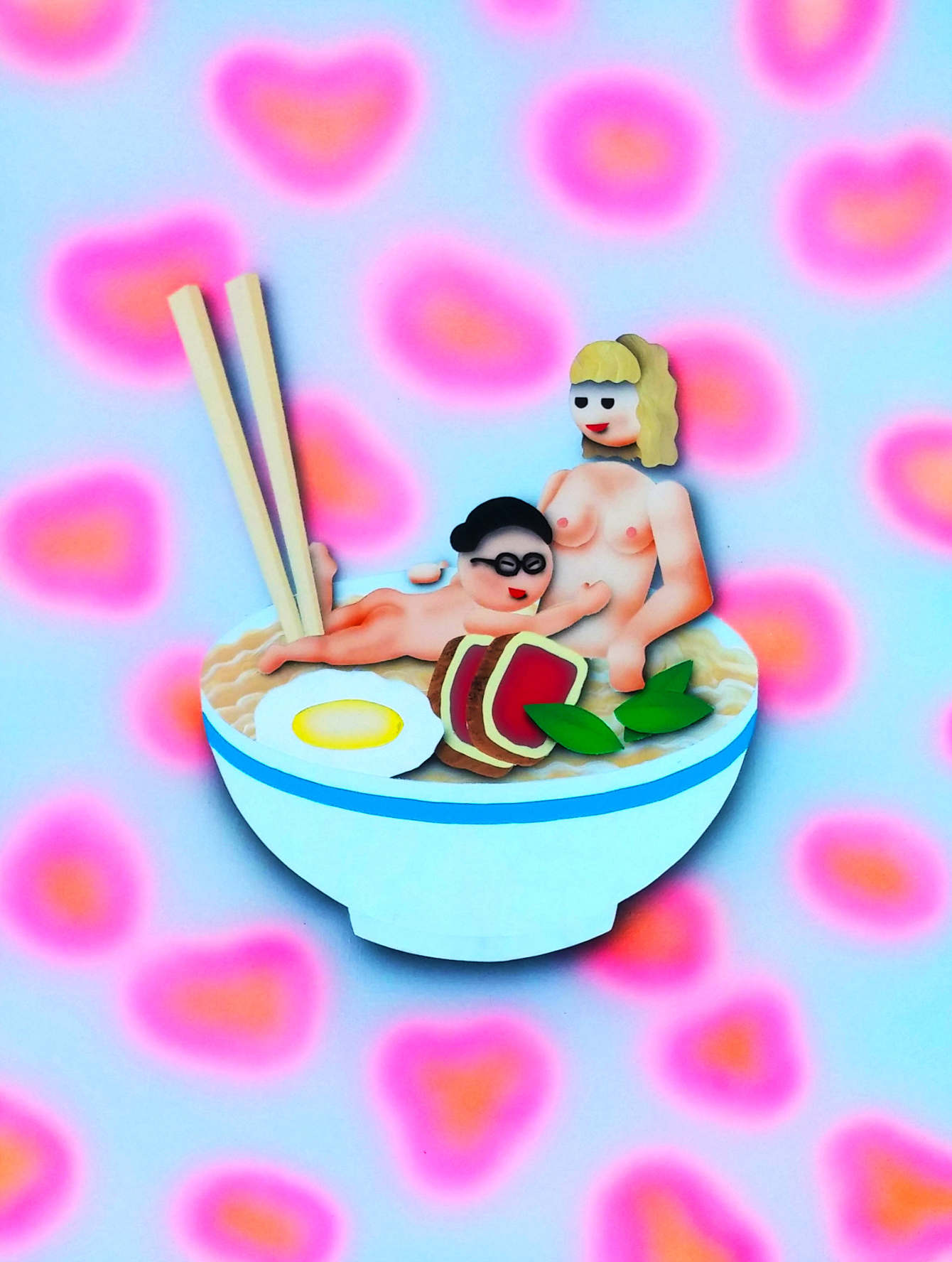
Which cartoons in particular?
The Simpsons were so undeniably American, yet were easy to identify with because they were yellow like me. Arthur was another one of my favorite cartoons because they pretty much lacked any race; they were a bunch of talking animals. So a lot of my experiences as a kid resulted from my family not fully assimilating into American culture.

Was the Internet an outlet for you?
My shitty dial-up connection was reality to me for most of my childhood. In real life, I would start talking the way people would in those Asian chatrooms. I would take people’s personalities and replace them with memes of themselves. The absurdity of what happens on the Internet and cartoons were always more gratifying to me than the struggles of dealing with life. I created a world where satisfaction lies in nonsense.
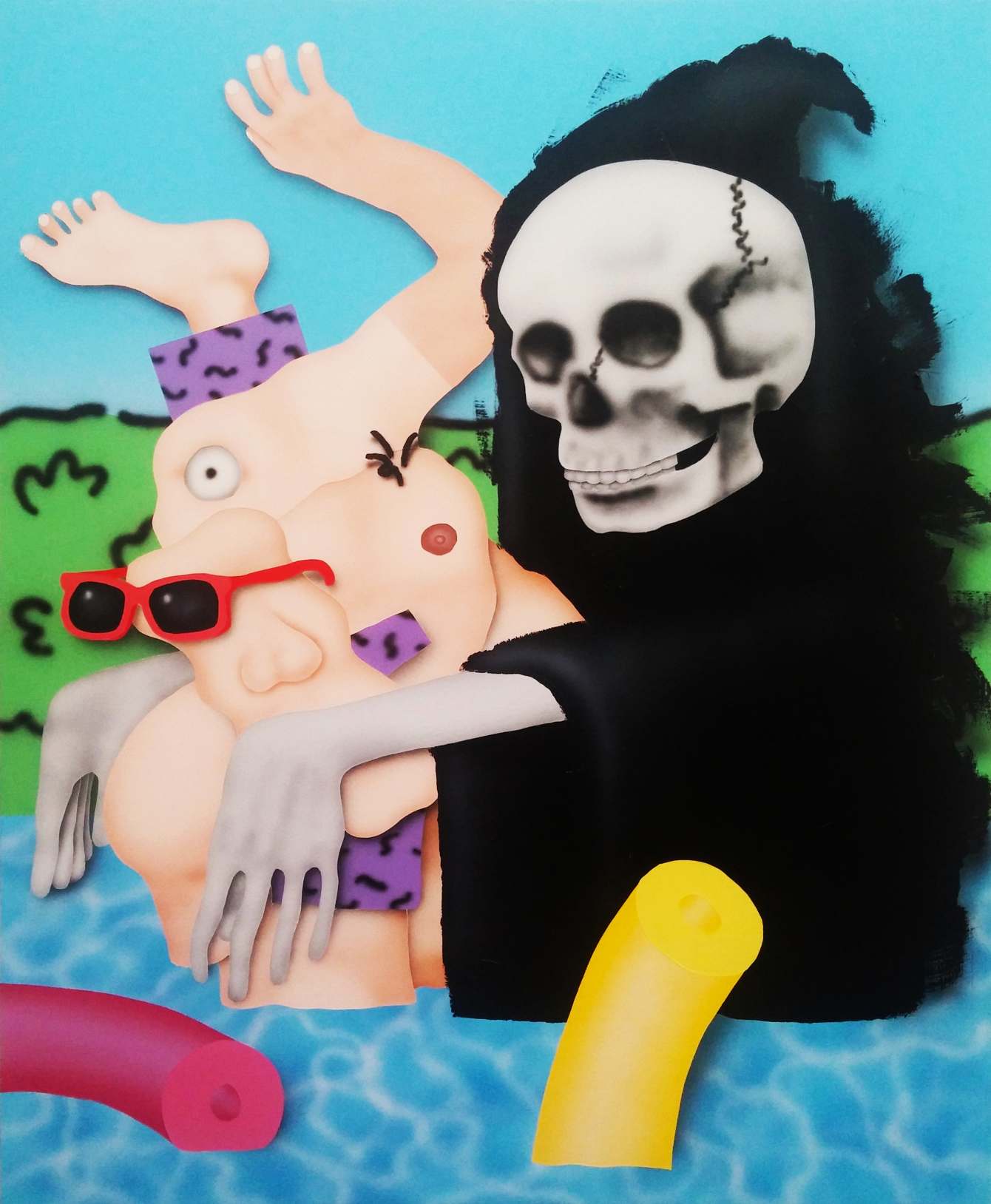
When did you start incorporating your own experiences into your art?
Probably not until I left college and moved to California. Between undergrad and grad school, I dealt with an existential crisis, especially in my art. I was still holding on to a lot of what I was taught in school. I was struggling to figure out what I should paint and what I was all about. I thought that I should be like all the famous old white dudes that ended up in museums and textbooks. I couldn’t find inspiration from them and never really saw the hype in their work. The only other artists that excited me were the ones that were younger and making work inspired by cartoons and other shared childhood experiences. I figured it would only make sense to make art about what I know.
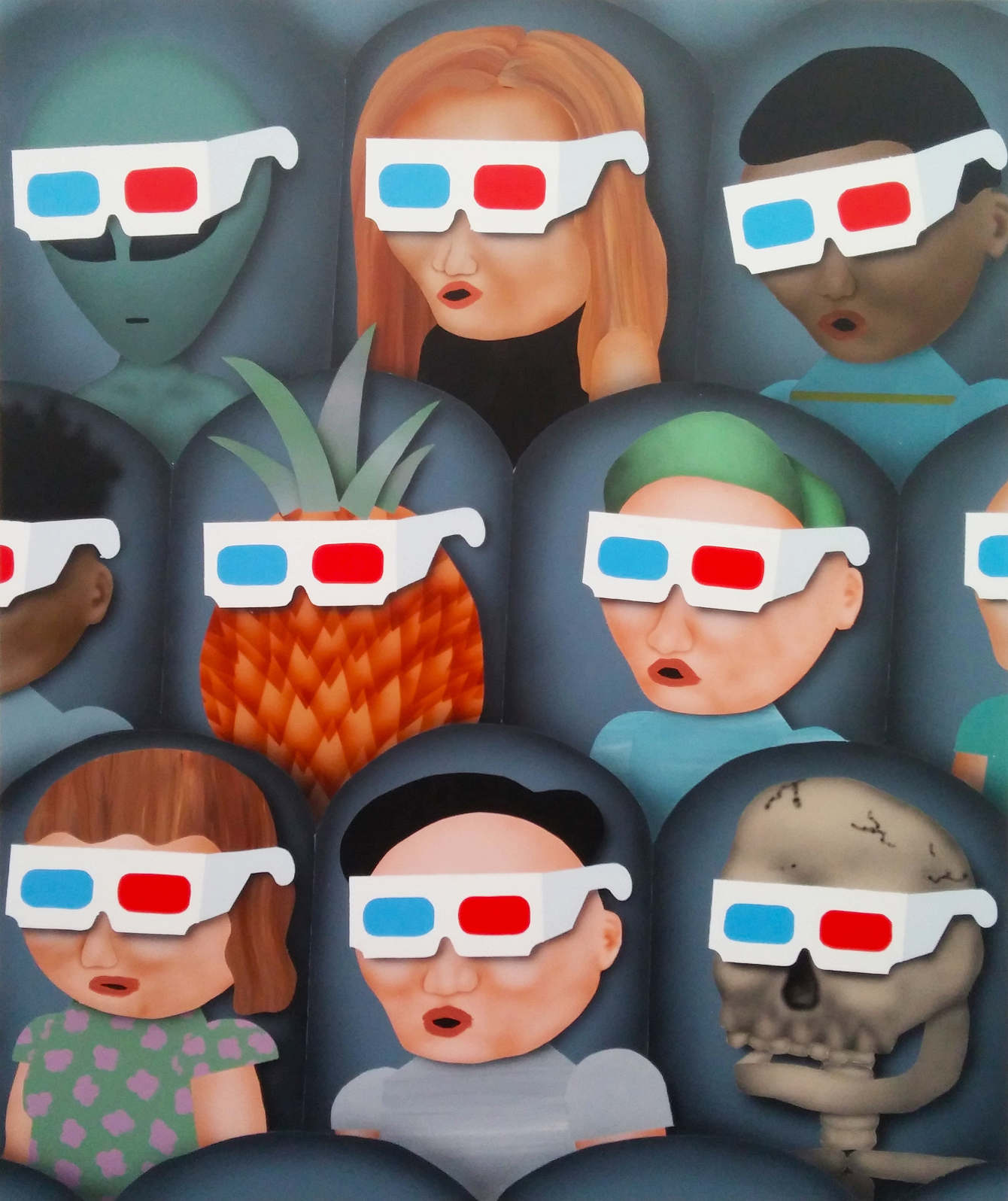
Has social media shaped the look of your work?
I do think about how Instagram-able my paintings will look when they’re finished. A lot of artists will deny that they do that, but I’ve come to embrace the new medium and how it’s influenced the sociability of contemporary art. Memes at their core are crude anecdotes of everyday life. Their popularity lies in the relevancy of the subject matter to the viewer. Memes and YouTube videos are just funny because we can easily connect to what’s happening. Whether I do it intentionally or not in my work, I always enjoy when someone shares my humor and appreciation for butt jokes. Digital culture drives me to search for ideas that will connect me to other people.

So what’s up with all the butts?
I’m not exactly sure, but butts are just funny. It could be my sexual attraction to butts, it could be the hilarity found in any situation where butts are inserted, or it could be the enjoyment I find in the narrative aspect of the butts I use in my work. Every time I draw or paint a butt it’s for a different reason. There have been papers written and documentaries made, but I guess my search for the butt answer goes on.
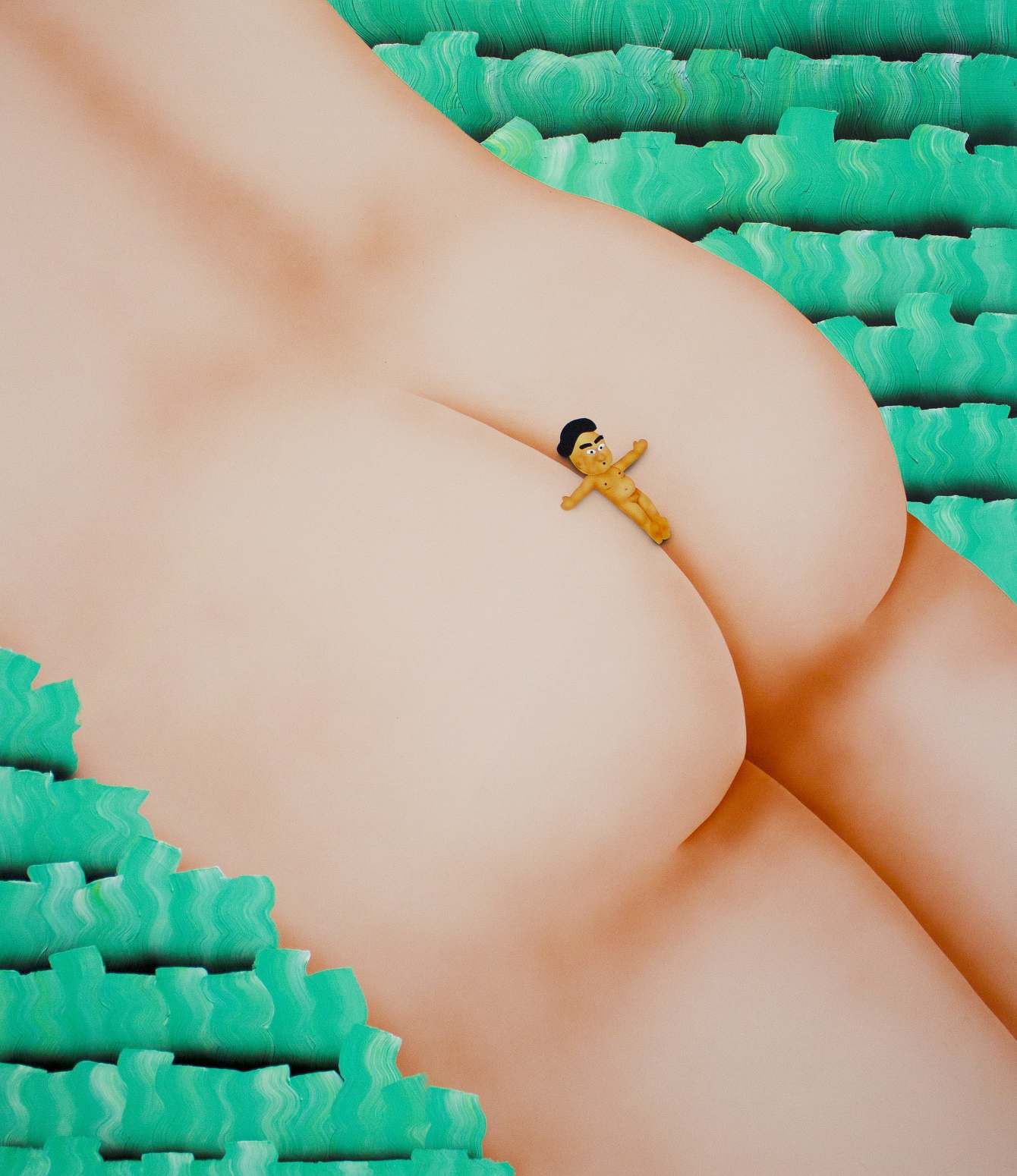
What did your parents want you to be? What do they think about what you’re doing now?
To this day, I can’t tell if they know or care about how serious I am about being an artist. They’re very straightforward old-school Asian parents who only see success in wealth. They didn’t really care what I ended up being, as long as it wasn’t what I actually wanted. Once a week, my mom calls to tell me to wash my butt and get a new job.
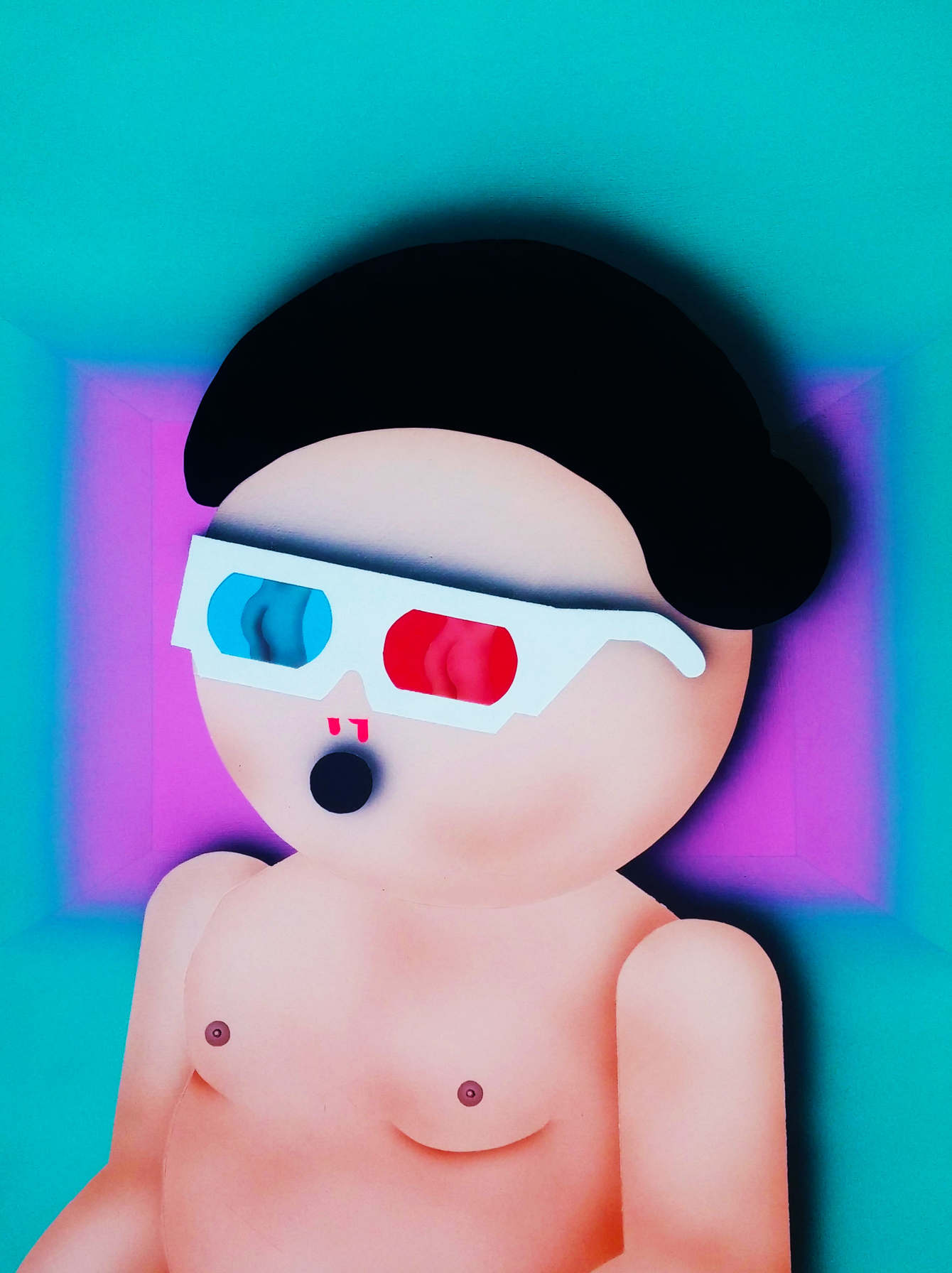
Courtesy Sean-McGee Phetsarath
